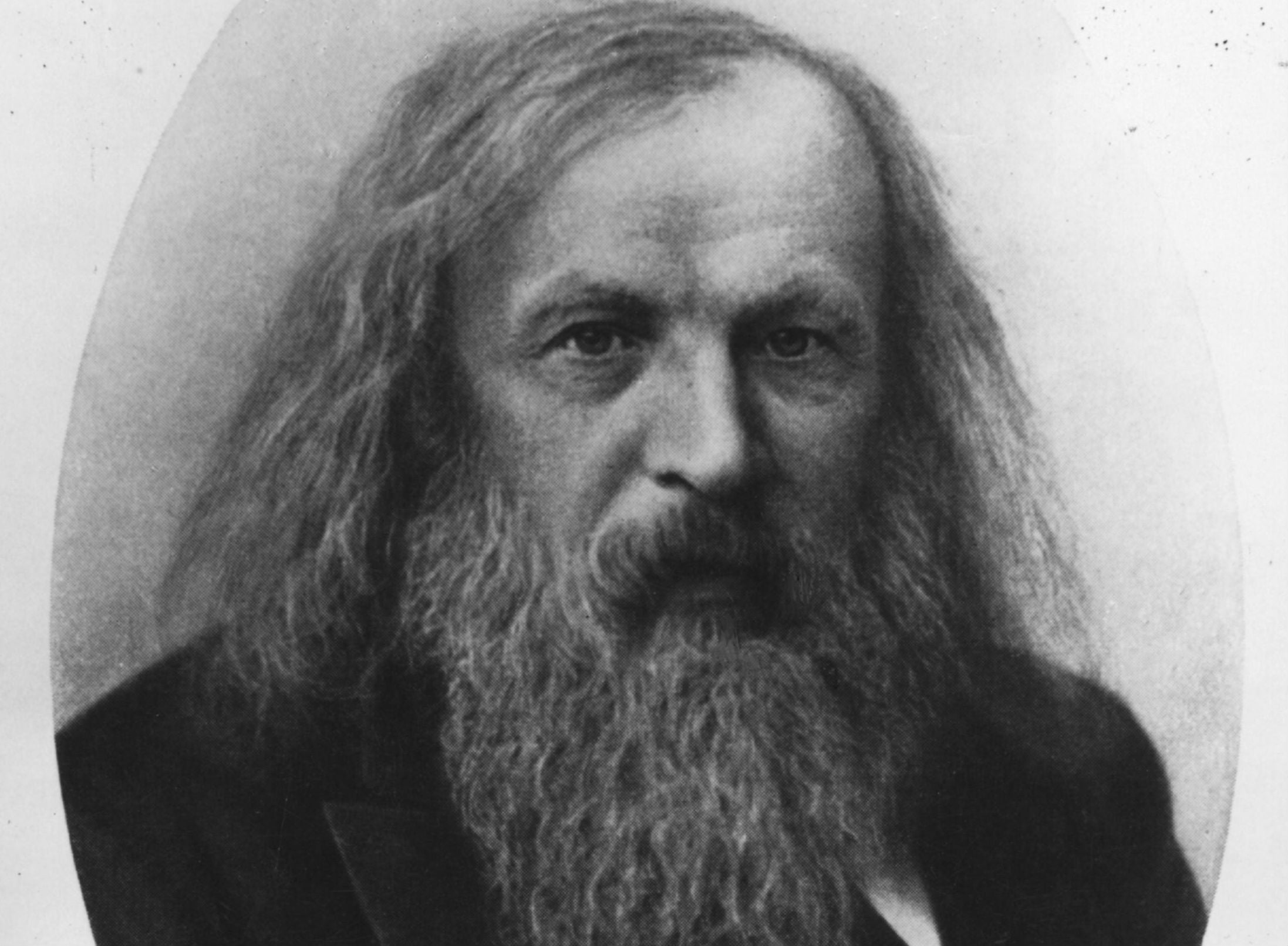Dmitri Mendeleev profile: Google Doodle marks the 182nd birthday of the man who invented the periodic table
'I saw in a dream a table where all elements fell into place as required'

Your support helps us to tell the story
From reproductive rights to climate change to Big Tech, The Independent is on the ground when the story is developing. Whether it's investigating the financials of Elon Musk's pro-Trump PAC or producing our latest documentary, 'The A Word', which shines a light on the American women fighting for reproductive rights, we know how important it is to parse out the facts from the messaging.
At such a critical moment in US history, we need reporters on the ground. Your donation allows us to keep sending journalists to speak to both sides of the story.
The Independent is trusted by Americans across the entire political spectrum. And unlike many other quality news outlets, we choose not to lock Americans out of our reporting and analysis with paywalls. We believe quality journalism should be available to everyone, paid for by those who can afford it.
Your support makes all the difference.The father of the periodic table, Dmitri Mendeleev, has been commemorated with a Google Doodle to mark his 182nd birthday.
Born in 1834 in Siberia, the Russian chemist and inventor formulated the period law and wrote Principles of Chemistry - a seminal book which radically reshaped science.
Published in 1869, the Periodic Table originally included 58 elements. But since then, there has been an average of an extra element added each year, with 118 elements now listed in total.
The preeminent inventor who has a crater on the moon named after him and element number 101 - radioactive Mendeleviumm - will long be remembered for his invaluable contribution to science.
Early Years
Born in a remote Siberian village, Mendeleev was the grandson of an esteemed Russian Orthodox priest and raised as an Orthodox Christian. Of course, his faith changed later in life when he pursued a career in science and moved away from the Church. Although it is not known exactly how many siblings the Russian scientist had, he is thought to be the youngest of anywhere between 11 and 17 offspring.
Also interested in academia, Mendeleev’s father was a teacher of politics, fine arts and philosophy. Sadly, he later lost his job as a professor after turning blind. Left with little to no money, Mendeleev’s mother was forced to reopen her family’s long deserted glass factory. However, the same factory was later burnt down and wholly destroyed in a fire. In the attempt to ensure Mendeleev received a proper education, his mother took him across the entire continent of Russia, travelling from Siberia to Moscow and later St. Petersburg where he graduated from university.
The making of the Periodic Table
After becoming a teacher in Crimea in 1855, Mendeleev went on to complete a Master’s degree in chemistry. But it wasn’t until he became a professor in 1864 that his colourful career began to truly take off. In the end, it was a dream which caused him to create the periodic table. In his own words, “I saw in a dream a table where all elements fell into place as required. Awakening, I immediately wrote it down on a piece of paper, only in one place did a correction later seem necessary.” In true genius fashion, Mendeleev made sure to leave gaps for missing elements, accurately predicting that these spaces would later be filled when additional elements were discovered.
A wild love life
Outside of the world of science, the Russian inventor was also known for his somewhat tempestuous married life. While he married Feozva Nikitichna Leshcheva in 1862, just over a decade later he became besotted with Anna Ivanova Popova and immediately began pursuing and courting her. In a fit of passion, he threatened suicide if she refused his proposal of marriage. It wasn’t until a month after he married Popova that his divorce from his first wife was finalised. But even after the divorce, Mendeleev was technically defined as a bigamist - the act of entering into a marriage with one person while still legally married to another - because the Russian Orthodox Church required at least seven years before lawful remarriage. Plagued by controversy, his love life was a contributing factor towards his failure to be accepted into the Russian academy of Sciences. In the end, Mendeleev went on to have a total of six children.
A conspiracy against him
Despite being recommended for the Nobel Prize for Chemistry for discovering the periodic table in 1906, Mendeleev ended up being snubbed by fellow scientists. While the Swedish Academy initially supported his recommendation, Peter Klason, a member of the Nobel Committee, put forward the candidacy of Henri Moissan for the prize. To make matters worse, another scientist Svante Arrhenius, who had great influence in the Academy, pushed for the rejection of Mendeleev, arguing that the periodic table was too old to be commended for its creation in 1906. It is widely thought that Arrhenius was in fact moved by a long-running grudge against him for his critique of Arrhenius's dissociation theory. Following a series of contentious debates, Mendeleev eventually lost out on the prize and the Academy chose to vote for Moissan.
Join our commenting forum
Join thought-provoking conversations, follow other Independent readers and see their replies
Comments